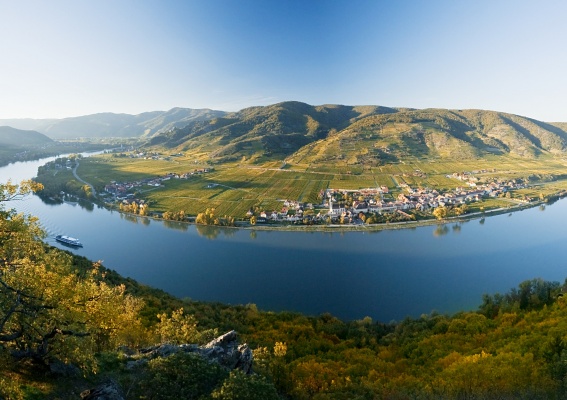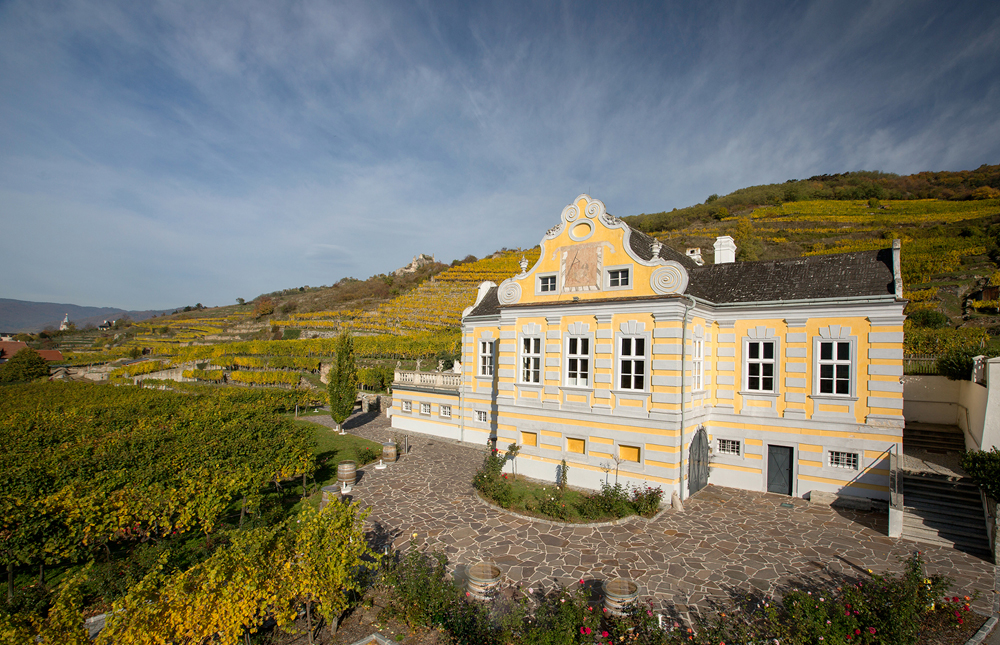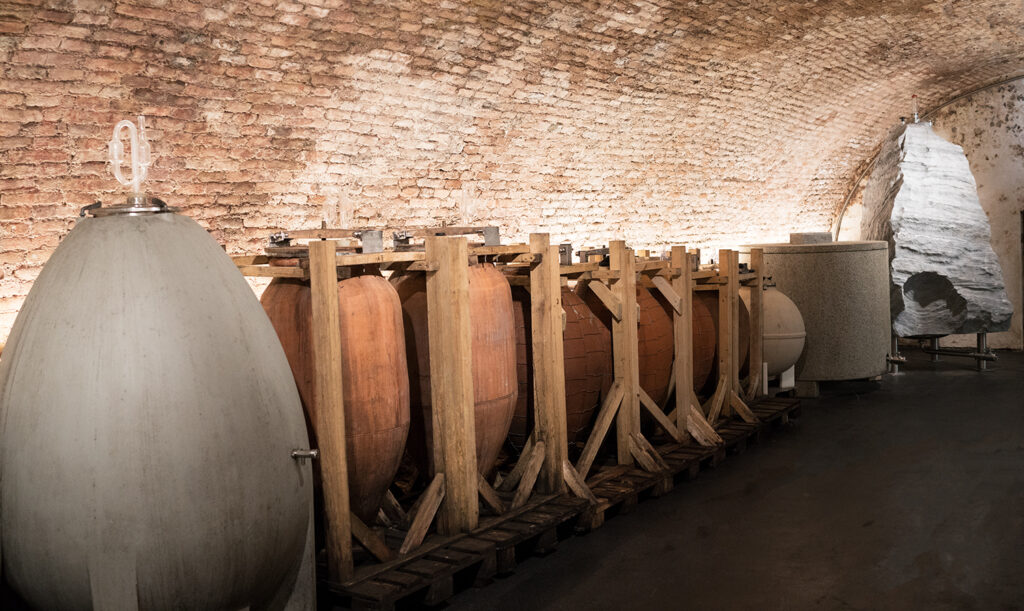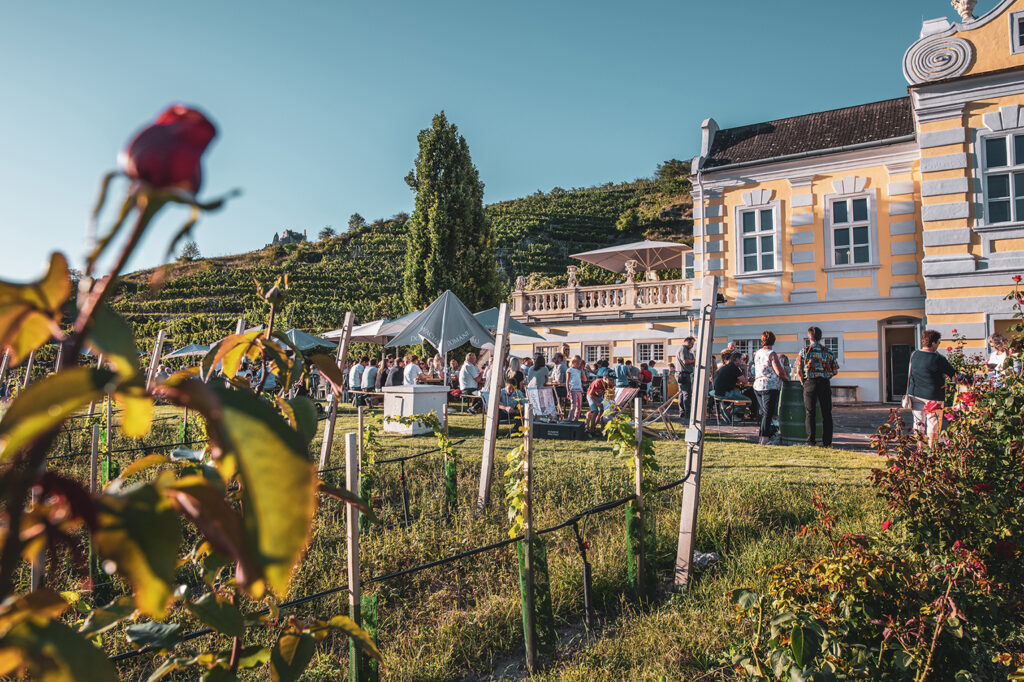As the sun shone down between the clouds, illuminating the medieval buildings and ancient abbeys, a little girl took a deep breath. Life was an enchanting dream in the Wachau Valley, Austria – tiny villages with steep hills planted with vines along the old dry-stone terraces that were constantly refreshed with the breezes from the Danube River. In her early childhood, this little girl took in the historic buildings of her village thinking of all the stories rooted in events thousands of years ago that told tales of love and loss. For a time there seemed to be no other place as magical as her home where she would run along the river during the summer while the smell of ripe apricots in the air indicated that it was time to harvest this delectable stone fruit. But as she grew into adolescence she could not help but yearn for something more than what went on in her old-world town and her never-ending chores of helping out her family in their vineyards which was once thrilling as a child but had become a burdensome servitude that only created a stronger desire to escape.
That young woman would travel the world and experience things that were beyond her wildest dreams eventually finding a fast-paced, extremely competitive career in a major city until she got to the time when it all became too much. She would have random panic attacks, find joy in very little, feel each day filled with dread until she walked away from it all, not knowing what she would do next, but she just needed to go back home to her Danube River so she could deeply breath again. There, she walked through the steep vineyards as she had done many times in the past, feeling a wave of peace come over her that she hadn’t felt in a long time and she knew that she needed to come back home and leave the rat race behind, but there was one deep regret; in that moment she would have done anything to change places with that young adolescent to make sure she stayed on the path of helping to run her family’s vineyards or to at least come back sooner… because after a time it had become too difficult for her grandparents to work their labor-intensive vineyards and they sold them off. The vineyards that had become part of her soul as a child were no longer owned by her family.
Some wine producers become lucky as either they make a name for themselves during the right time or they ride the tidal wave of the success of a wine region that becomes extremely popular around the world, but for many, it is a constant struggle as the overall cost of living and cost of land taxes combined with an uncertain future for a place on the market for one’s wines takes its toll. After World War II, for many European wine regions, the idea of a wine cooperative – a group of vineyard owners working together to create and sell wine – became very popular as a means of survival as it divides the costs among many instead of just one but even cooperatives have faced recent challenging times.
In general, cooperatives can have a reputation for making tons of entry level wine that many times are seen in supermarkets across Europe and during a time when overall consumption of cheap wine has decreased and more wine from around the globe enters the world market, cooperatives are “doomed to fail,” according to Master of Wine Roman Horvath. And Roman would know as he was a wine buyer for Austria’s leading wine retailer Wein & Co but what is interesting is that since 2004 he has been the winery director of a cooperative called Domäne Wachau in the wine area of Wachau (pronounced: va COW) and it seems an odd choice for a man who knows all the issues with such an operation.
Wachau, Austria
It may seem odd to those hardcore Austrian fine wine drinkers that Wachau was only just recently awarded Austria’s version of a quality wine designation, DAC, especially in New York City, as the Grüner Veltliner and Riesling single vineyards from Wachau were highlighted on the wine list of the celebrated Austrian fine dining restaurant Wallsé for over 20 years; and although many of the wonderful wine regions of Austria are today represented on the Wallsé wine list, there is still a special place for the back-vintage Wachau wines that give proof to the ageability of the Riesling and Grüner Veltliner grape varieties. Twenty years ago New York fine wine drinkers may have known very few wine regions in Austria but the one area they did know was Wachau.
Roman said that part of Wachau’s success lies in it being a popular tourist destination since the 1950s as it is only a one hour drive along the Danube River (via car, train or boat) from Austria’s stunning capital city Vienna as well as it being an enchanting landscape on its own. And so there was a significant amount of investment in the vineyards of Wachau and today they still have many of those 50 to 60 year old Grüner Veltliner and Riesling vines. Wachau has had a couple of rock star winemakers that would make a splash as far back as the 1960s and ‘70s but for most in this small wine region, becoming a rock star seemed impossible because of lack of funds, knowledge and making wines that weren’t on the radar for the masses. And so one-third of the small Wachau wine region (only 3,200 acres in total compared to Napa’s 43,000 acres of vineyards) is overseen by a cooperative calledDomäne Wachau – owned by 250 families who have been in Wachau for generations.
Domäne Wachau
It may have seemed that most cooperatives were doomed in Roman’s opinion, especially during the time when he was a wine buyer, but he does note that there are a few in Europe that are the rare successes producing excellent quality wine and being equally recognized for it such as Produttori del Barbaresco in Barbaresco, Piedmont. So when Roman came to Domäne Wachau he knew it had all the key factors for a potentially successful cooperative: small wine region, great terroir and well-established quality vineyards. But there was no vision or overall structure that would be able to juggle several different bottlings of all the single vineyard wines, marketing and selling them, as well as invest even more into sustainable and quality driven management practices in the vineyards.

Photo Credit: Domäne Wachau
The “slow evolution” of Domäne Wachau to a more ultra-premium level organization has been a mammoth task that couldn’t have been possible without Roman’s partnership with its cellar master Heinz Frischengruber as he was able to really zero in on all the top quality, fiercely challenging steep vineyards and channel each individual expression into its own bottling; also making all the vineyards certified sustainable and now working on converting them to organic has been a mountain to climb within itself. It has been one tiny step after another in regards to getting the 250 growers/owners of Domäne Wachau to trust that their wines would be well-received beyond the prejudices that come with the label of being a cooperative and garner the praise as well as a higher price point that they would need to cover the extra expenses of trying to compete in the fine wine world.
Roman said it took a while before the growers were comfortable putting more resources and money into taking this leap and he completely understood because they are gambling their livelihoods on it. But now, as they have seen top wine critics giving them praise and their wines being requested by wine buyers around the world, the growers are pushing Roman to take Domäne Wachau to the next level instead of it being the other way around.
Easy to Make the Right Choices When There is Hope
Domäne Wachau is located where the climate is marginal in terms of ripening wine grapes and although there will be warmer vintages nowadays compared to the past, Wachau will still get cooler vintages that can also be wetter which is a battle in the vineyards to achieve premium grapes in steep vineyards that can only be managed 100% by hand. And Roman said that it is only possible to do what they do because they have 250 growers with small lots and the growers have a “strong bond” with their vines and land and they can react quickly as they live and breathe their vineyards every day.
There are so many Wachau families that have their lives intertwined with the success of Domäne Wachau with each having their own distinctive story while also having a common purpose. One such family is led by Nina Preisberger who has had her 3.7 acres of the single vineyard ‘Ried Bruck’ in her family for several generations and today she is a full-time vintner and full-time mother managing the vines with her grandfather, her small children learning at a very young age the importance of generations working side by side to preserve their land.
That story of the young girl leaving Wachau to live a seemingly more adventurous life who realizes when it is too late that she was happiest when she was in her family’s vineyard never happened. But that scenario has been a road that many others around the world have gone down because there was never any hope that one could keep the family business going as the world changed around her and her family’s legacy had become obsolete. Yet what Roman Horvath and Heinz Frischengruber have done with Domäne Wachau is show the growers that they can move with the times and become part of the fine wine world not only bringing in more money that will help with generational survival but also give people the pride and fulfillment of being part of something special.
Nina could have been that girl who left but instead she is a partner in a successful wine company that is run by herself and her neighbors while never having to sacrifice establishing those same precious memories for her kids that she formed as a child playing in the same vineyard with her family.
***This article was originally published in Forbes: https://www.forbes.com/sites/cathrinetodd/2021/08/15/250-wine-grape-growing-families-in-austria-produce-excellence-by-banding-together/?sh=65a1fbe66b09

Photo Credit: Cathrine Todd
A couple of points that are important to understanding the labeling of the wines below: anytime there is the word ‘Ried’ before a name, that indicates a single vineyard as opposed to just a brand name that refers to a wine that comes from grapes throughout Wachau, such as the ‘Terrassen’ wine below that contains grapes from various terraced vineyards on steep hills in Wachau.
Also, Federspiel is a style that is a tier above the entry level Steinfeder (typically only seen in Austria) as it is picked from high quality vineyards later and gives a wonderful sense of varietal characteristics of grape varieties such as Grüner Veltliner and Riesling as well as a stronger sense of place; the Smaragd style is the highest level and picked even later than Federspiel and sourced from some of the best vineyards and these styles are known for more concentration, intensity and an ability to age for decades.

Photo Credit: Cathrine Todd
2020 Domäne Wachau, Grüner Veltliner Federspiel ‘Terrassen’, Wachau, Austria: 100% Grüner Veltliner. White pepper and peach flavors with round texture and creamy body with a lot of mouthwatering acidity that finishes with lemon confit. Roman noted that 2020 was a cooler year so it was displaying “pronounced acidity” that he said would balance out in a year and a half as it was just bottled.

Photo Credit: Cathrine Todd
2018 Domäne Wachau, Riesling Federspiel, ‘Ried Bruck’, Wachau, Austria: 100% Riesling. Flinty minerality and a multi-layered expression of lime with lime sorbet, lime zest and lime blossom that had an exotic green mango and green papaya note with a fun combination of juiciness and sharp edged acidity. 2018 was one of the warmest years they had in the Wachau, Roman noted, but since the Bruck vineyard is one of their coolest climate plots in the Wachau, even in warm years the “firm acidity” and “raciness” is still present.

Photo Credit: Cathrine Todd
2019 Domäne Wachau, Grüner Veltliner, Smaragd, ‘Ried Achleiten’, Wachau, Austria: 100% Grüner Veltliner. More earthy spices such as turmeric rather than white pepper and a subtle nuttiness (that comes from the variety Grüner Veltliner, according to Roman) with almond slivers that had a tart edge on the palate balanced by a hint of poached pears in rich syrup. 2019 was a warm, dry vintage without any extreme weather events.

Photo Credit: Cathrine Todd
2019 Domäne Wachau, Riesling, Smaragd, ‘Ried Achleiten’, Wachau, Austria: 100% Riesling. Smoky minerality with laser-like acidity, pristine stone fruit and a fierce saline finish that was absolutely captivating; an electric Riesling that is quite a beauty with a long life in front of it.
1996 Domäne Wachau, Riesling, Smaragd, ‘Ried Achleiten’, Wachau, Austria: 100% Riesling. There was more of a trend for concentrated, richer wines in the ‘90s and so it was common for Wachau producers to add 5% to 10% of noble rot grapes (botrytis) during those times and hence this wine shows those spicy, marmalade and toffee notes quite well, especially considering that it was seen as a lesser vintage because it was a cool, wet year in ‘96 as opposed to the great ‘95 and ‘97. But this delicious 25 year old Riesling is still a wonderful example of how amazing it can be with age when it comes to these top sites and among the decadent notes there was still plenty of marked acidity and fresh tangerine and saline minerality to balance it all out. Roman said that the practice of adding botrytis has fallen out of favor, although there are still a couple of producers who do it well, and that Domäne Wachau doesn’t add any today in their dry wines as they want pure, fresh wines.














